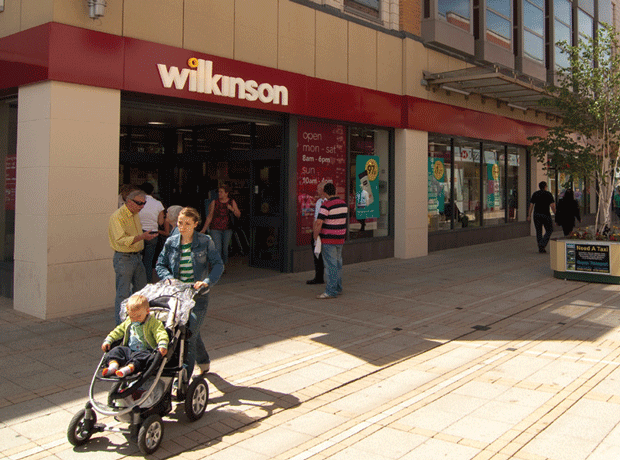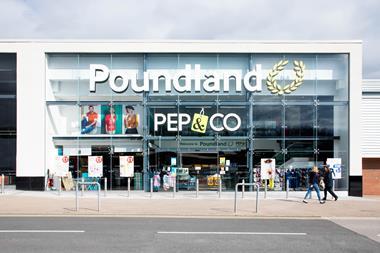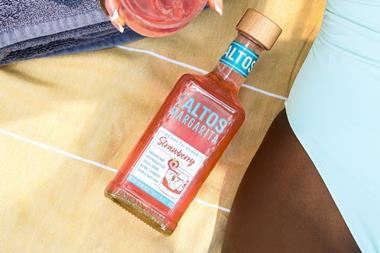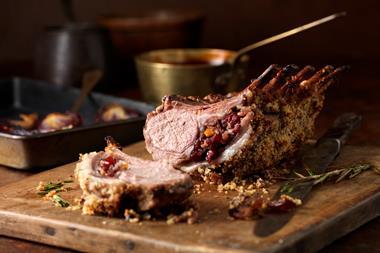If Malcolm Walker succeeds in getting his hands on Woolworths, he’ll be well advised to look at why its rival is doing so well.
Last week Woolworths rejected a £50m takeover approach from Iceland boss Malcolm Walker.However, Walker, backed by a Baugur-led consortium, is not proving an easy man to reject. Reports suggest he is now planning to meet Woolworths chairman Richard North to discuss a new bid.
If Walker seals the deal and decides to run Woolworths as a standalone business rather than cherrypicking stores for Iceland and offloading the rest across the Baugur estate, he would do well to look to rival retailer Wilkinson for inspiration. In stark contrast to Woolworths, Wilkinson is making the most of the credit crunch
While Woolworths’ retail sales across its then 819-store estate (it has since sold four stores to Waitrose) fell 5.2% to £1.7bn in the year to 2 February, Wilkinson, dubbed ‘the Woolworths of the north’, reported a 9.5% increase in sales to £1.4bn across just 295 stores.
So, what is Wilkinson doing that Woolworths isn’t? It’s time for a spot of retail therapy.
The Woolworths in Queens Square, Crawley, sits in a prime location in the heart of a busy pedestrianised shopping area. When I visit, it’s Friday afternoon during school holidays, but the store is quiet. The back-to-school and toy sections are busy, but the rest of the store is almost empty, with just one shopper browsing CDs in the entertainment section. The elaborate maze of cordons leading to the main till rivals a theme park, but suggests the store is trying to fill unused space rather than encourage queuing.
Woolies vs Wilko
Whereas Woolies’ offer lends itself to the pre-Christmas rush, but fails to bring in regular custom, Wilko packs in the fmcg goods to keep customers coming back for more.
Woolworths
The offer: confectionery, entertainment, toys, children’s clothes, stationery, homewares
Stores815
Sales (retail)£1.7bn
Profit (retail)£3.4m
Wilkinson
The offer: homewares, DIY, garden, health & beauty, groceries, pet, stationery
Stores295
Sales£1.4bn
Profit£50.3m
Browsing the confectionery section, I note that the retailer’s famous pic’n’mix is on offer for the week, down from 69p per 100g to 50p. However, the small groceries section, including Fruit Shoot drinks, Jammie Dodgers, 2-litre bottles of Robinsons squash and multipacks of crisps, sandwiched between the boxes of Roses and Quality Street seems incongruous. All the products are priced at £1, but the range has no signage and feels like an afterthought.
Next stop is Wilkinson, in the neighbouring town of Horsham. The store is located in the town’s shopping centre, and is smaller than Woolworths. The groceries section is impressive, however. At roughly 1,000 sq ft, it has its own overhead signage and covers three aisles of ambient branded products including Coca-Cola, Heinz and Kellogg’s. There’s also a chilled section with milk, yoghurt, sandwiches and drinks.
The main difference between the stores is the lack of footfall-driving fmcg goods in Woolworths, say experts.
“If you look at when Woolworths makes its money, it is heavily skewed towards the final quarter of the year, so it is not generating regular footfall,” says John Stevenson, retail analyst at Shore Capital. “Wilkinson has regular footfall driven by fmcg. Walker will have to break away from seasonality to attract customers regularly.”
Another glaring difference is in execution. The Woolworths store in Crawley seems stuck in a 1980s time-warp, laid out haphazardly, with gaps on shelves. In contrast, the Horsham Wilkinson, although far from state-of-the-art, is brighter, fully stocked and logically laid out.
The latter’s strong value positioning is clearly tempting shoppers. In the Horsham store, countless offers are highlighted through large in-store signage and garish red and yellow shelf barkers.
Woolworths is trying to fight back. At its Crawley store, it is promoting its budget Worthit! range. There are also numerous Price Drop signs around the store, a campaign launched earlier this year to cut the price of more than 1,000 products to help customers during the credit crunch.
But fate hasn’t been kind. In April, it joined forces with Somerfield to trial convenience-focused food in three Woolworths stores and Woolworths products in 12 Somerfield stores and the initiative’s future now looks uncertain in the wake of The Co-operative Group’s acquisition of Somerfield.Wilkinson, on the other hand, has rolled out its 700-strong grocery range to 178 stores and, claims CEO Stuart Mitchell, is generating in excess of £50m in annual sales.
Verdict Research analyst James Flower sums up Woolworths’ predicament. “As a value retailer, it should be benefiting from price-conscious shoppers trading down and choosing to shop more locally,” he says. “The fact it is not doing so is deeply worrying.”
Worrying yes, terminal perhaps not, if Walker can do for it what he has done for Iceland. Leaving Crawley, I pass one of its frozen food stores. Trade is brisk and the queues long. Wilkinson is clearly not the only format Walker could take inspiration from.



















No comments yet